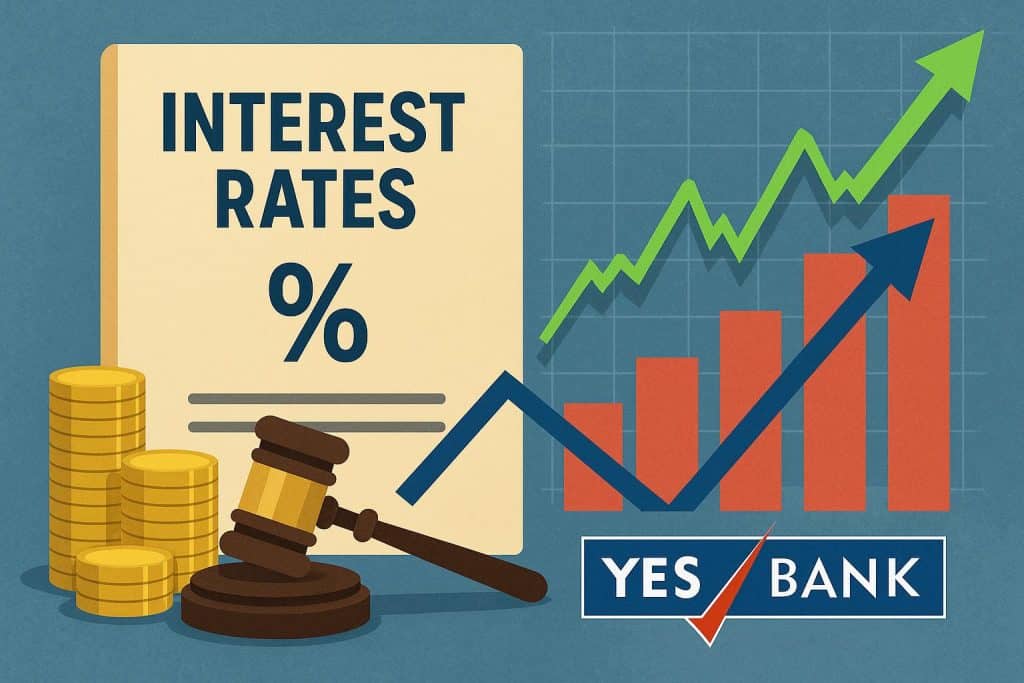The Margin Trading Facility allows retail investors to pay for only a part of the trade value for buying stocks, while the rest is provided by the broker, who charges interest on the amount lent. MTF products differ between brokers: for instance, ICICI Direct publishes plan-based MTF interest rates (from ~9.7% p.a. to higher, depending on the plan) and conditions for funded positions. Zerodha and other brokers explain per-day interest charges on MTF positions. These mechanics matter because the cost of leverage changes traders’ incentives to hold or add to positions.
The story of how MTF interest-rate moves affect the Yes Bank share price is not a single-factor story. In liquid, widely held stocks, lower MTF Interest Rates reduce the carrying cost for leveraged buyers, which can drive up short-term demand and prices; higher rates lift the cost of leveraged holding and may reduce speculative buying, weighing on price.
Academic and empirical research on margin trading indicates that an increase in margin/leverage can lead to higher volatility and more haphazard price movements. Margin can also accentuate selloffs, depending on market sentiment.
Where does this matter for Yes Bank?
Yes Bank has gained attention due to periodic large share movements tied to corporate events, strategic investors and earnings surprises. Examples from 2025 include SMBC’s stake decisions and quarterly results that caused quick ups and downs in the Yes Bank Share Price.
When traders use borrowed money (through MTF) to buy these shares, changes in MTF interest rates can make these moves stronger. Lower MTF rates can boost buying, while higher rates can make prices fall faster.
What does the broker-level data show?
Brokerages in India use a slab-based pricing for MTF, and the per-day interest differential between brokers is material: firms like Paytm Money, Zerodha, and ICICI Direct publish daily/annualised interest examples and slab structures that traders compare when deciding where to route margin business.
Relatively lower advertised MTF Interest Rates (and slab-based discounts) have drawn in retail users in 2025, which increases the pool of margin liquidity available to buy names such as Yes Bank. Tracking which brokers are competing on rates would help in understanding where retail margin flows may concentrate.
What research and market data indicate
Quantifying the exact impact of the MTF rate moves on the Yes Bank share price requires the combination of broker-rate timelines, open MTF position data (not always public), daily trading volume, and news-event timing.
Cross-market studies generally show that margin trading can amplify short-run volatility; the magnitude, however, depends on liquidity, whether margin users are intraday speculators or longer-term leveraged buyers, and the presence of institutional participants who may offset retail flows.
For Yes Bank, a bank that’s actively traded and has had some major shareholder events of late, the likely outcome is a measurable but generally short-lived amplification of price moves around news.
What analysts say: Practical takeaways
Analysts also warn that the MTF Interest Rates only contribute and are not a leading factor in changes within the Yes Bank share price. Primary drivers include corporate developments, earnings, investor stake changes, and macro-banking sentiment.
- In absence of any major news, brokerage-level rate cuts have always been associated with leverage-driven inflows into mid-cap and small-cap names. This could magnify rallies in the short term for an actively traded bank like Yes.
- Risk management: brokers can liquidate pledged shares to recover unpaid interest; sudden liquidations during a rising interest or margin-call environment can accelerate downward moves.
Investor action checklist
- Monitor the broker MTF rate updates and your plan’s effective rate.
- Watch out for spikes in trading volume of Yes Bank around rate changes, with disproportionate retail activity suggesting leverage-driven flows.
- Combine MTF data with fundamental triggers such as earnings, stake news, and before positioning. Do not treat MTF rate moves as a standalone buy or sell signal.
FAQs
Q1: Is an increase in the Yes Bank Share Price guaranteed after MTF rate cuts?
No, cuts can boost leveraged buying, but don’t ensure gains. It’s usually the corporate results, ownership changes and macros that dominate the outcome.
Q2: How quickly do MTF rate changes show up in market behaviour?
The effects can be seen within days for the retail-driven names, especially if coinciding with positive news or increased coverage, but for more institutionally dominated names, the effect is slower and smaller.
Q3: Where can I check current broker MTF Interest Rates?
Broker websites display MTF terms for respective plans (example: ICICI Direct, Zerodha, Paytm Money, etc.), while aggregator write-ups enlist competitive prices per day/annualised. Always confirm on the broker’s official page.
